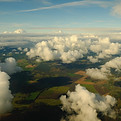fluxGHG

First greenhouse gas monitoring company with FLUX TOWER in Brazil!
We are a company specializing in measuring greenhouse gases in agriculture, livestock, or forestry. We use various measurement technologies associated with flux towers using the eddy covariance methodology, the fastest and most accurate technology available on the market. In just one year, you will know if your production absorbs carbon. Other technologies take 5 years or more! That’s a long time! We want to expedite your profits!

Services
Installation of a measurement system for greenhouse gases quantification
We install flux towers in agricultural areas. This is the fastest way to determine how much carbon an agricultural area absorbs or emits. This information can be used for carbon projects and to add value to your products.
Determination of emission or absorption factors from the agricultural area
The emission and absorption factors currently used in Carbon projects were calculated in the USA and Europe and often do not represent the Brazilian reality. We determine the actual factors in the monitored agricultural systems so that you can use reliable and representative data from your reality.
Extrapolation by modeling and remote sensing
We use satellite images and software capable of extrapolating the results obtained with measurements from the area where the flux tower is located to larger areas of your property or region.

About us

HISTORY
We are a team of highly qualified professionals, all of whom graduated from the Federal University of Santa Maria (UFSM). Our team includes Agricultural Engineers with experience in soil science, crop production, and pasture management. Additionally, our CEO and CTO were alumni of the UFSM Micrometeorology Group, which has been working with flux towers for many years.

VISION
Our vision is to become a leader in the greenhouse gas monitoring market for agricultural production, helping companies make more conscious and sustainable decisions.

TECNOLOGY
Flux towers quantify gas absorptions and emissions much faster than other methodologies. The data from flux towers will be associated with soil organic matter, plant biomass, gas chambers, etc., and can be extrapolated by remote sensing.

